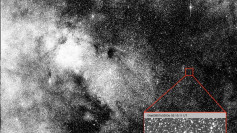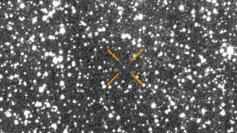The discovery of interstellar object 3I/ATLAS has triggered an unusually public fight over NASA data, as Harvard astronomer Avi Loeb and Rep. Anna Paulina Luna pressed the agency to release high-resolution images captured by the Mars Reconnaissance Orbiter's HiRISE camera. The object-only the third confirmed interstellar visitor ever observed-was first detected on July 1, 2025, and reportedly passed roughly 30 million kilometers from Mars on October 2, where NASA assets could have recorded its profile.
Loeb says images taken by HiRISE are essential to characterizing the object and testing fringe claims that the visitor is artificial. "The images are extremely valuable scientifically because they possess a spatial resolution of 30 kilometers per pixel," he wrote, adding they are "About 3 times better than the spatial resolution achieved in the best publicly available image from the Hubble Space Telescope, taken on 21 July 2025."
In a Medium post, Loeb said NASA had attributed the delay to an early-October government shutdown. He dismissed speculation that withholding the data signals anything extraterrestrial. "I suggested that the delay is probably not a sign of extraterrestrial intelligence but rather of terrestrial stupidity," he wrote.
Rep. Luna, citing the narrow observational window as 3I/ATLAS speeds through the Solar System, sent a letter to acting administrator Sean Duffy requesting immediate release. Her office argues that rapid access would allow ground- and space-based teams to coordinate follow-up measurements while the object remains bright enough for characterization.
3I/ATLAS has captivated both astronomers and the internet because of its singular origin and unusual, often over-interpreted early measurements. While many telescope observations have already appeared on preprint servers and in journals, researchers say the putative HiRISE set could anchor models for the object's shape, rotation, and activity-clarifying whether it behaves like a typical comet or something less conventional.
Loeb also emphasized the planning cost of delay. "The scientific community would have greatly benefited from the dissemination of this time-sensitive data as astronomers plan follow-up observations in the coming months," he wrote. He and other scientists argue that NASA's longstanding open-data norms-exemplified by Hubble, JWST, and Mars missions-support rapid public posting once basic calibration is complete.
The stakes are amplified by 3I/ATLAS's rarity. Only two interstellar bodies-'Oumuamua and 2I/Borisov-have previously been confirmed, and both left major questions unresolved. With 3I/ATLAS, astronomers hoped to capture earlier and sharper imagery to constrain composition and outgassing, testing whether its behavior aligns with standard comet physics.
Advocates for immediate release say transparency would also dampen runaway speculation. Rumors have ranged from a "death star"-style craft to claims of "dark-web videos," narratives scientists call a predictable byproduct of scarce facts during a fast-moving event. Publication of calibrated frames, they say, would let independent teams validate or refute extraordinary claims with ordinary photometry and morphology analysis.
For NASA, the dispute is as much about process as science. Agency missions commonly prioritize archiving and calibration pipelines, but critics argue that a once-in-a-generation target merits expedited handling. The agency has not publicly committed to a specific release date; researchers warn that as 3I/ATLAS recedes and fades, each week narrows the chance to pair spacecraft imagery with coordinated observations.
Key technical markers so far
- Discovery: July 1, 2025 (third confirmed interstellar object).
- Mars proximity: ~30 million km on Oct. 2, 2025 (HiRISE opportunity).
- Claimed resolution: "30 kilometers per pixel," per Avi Loeb.
- Comparative benchmark: "About 3 times better" than Hubble's best public image of July 21, 2025.






